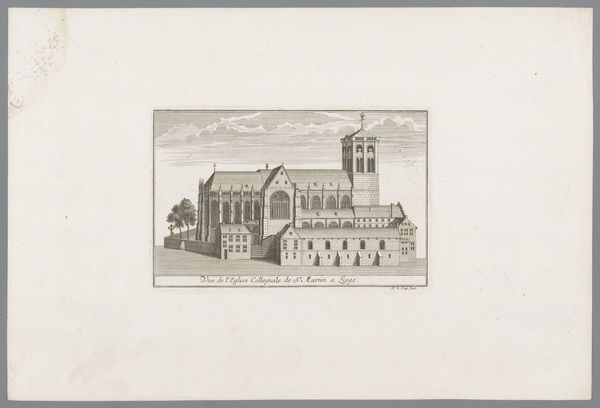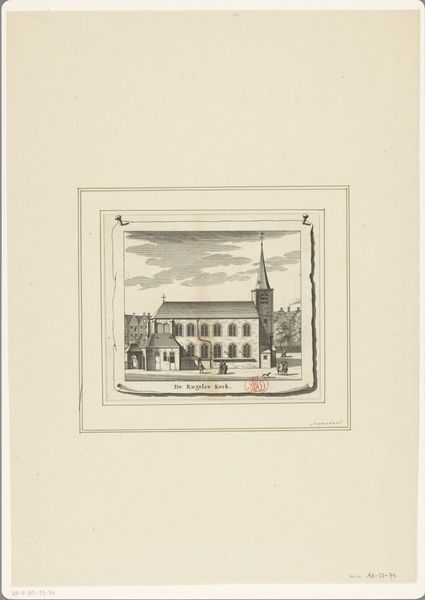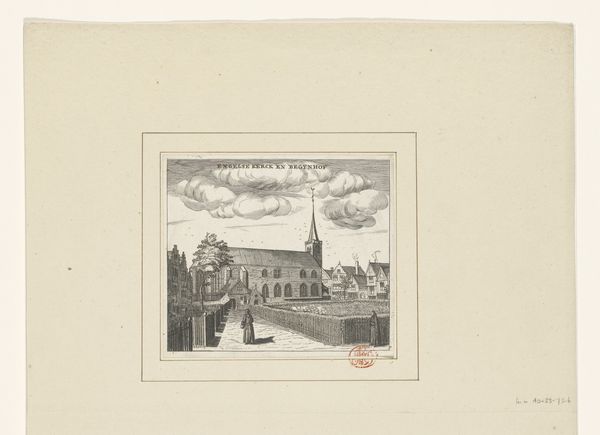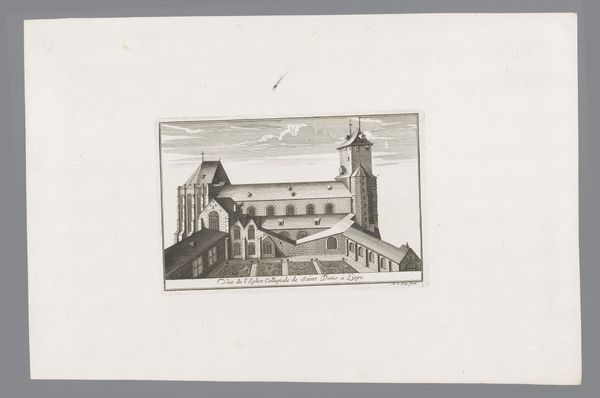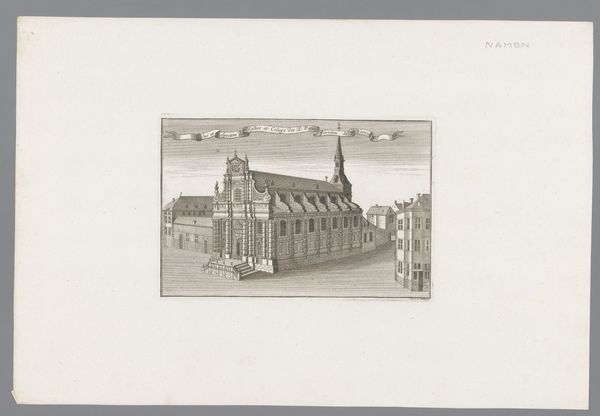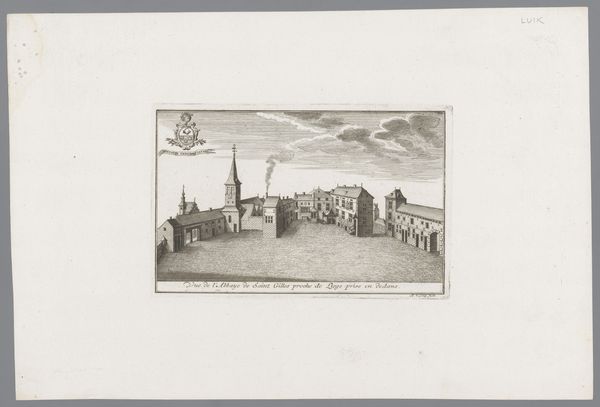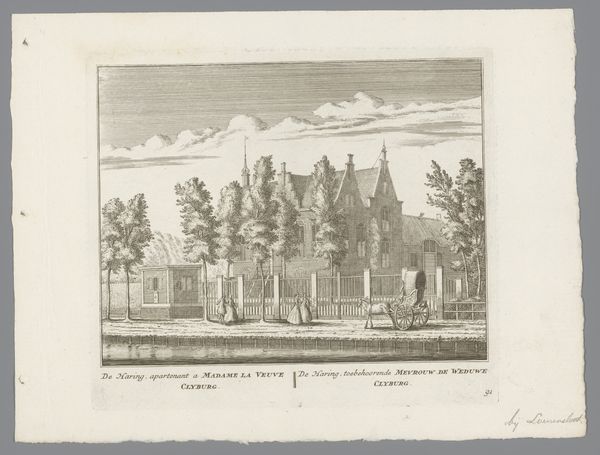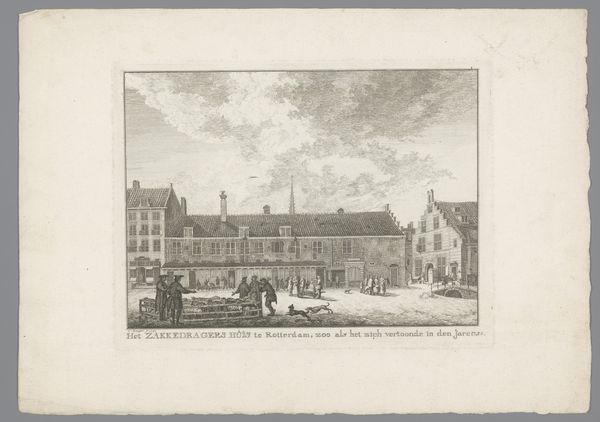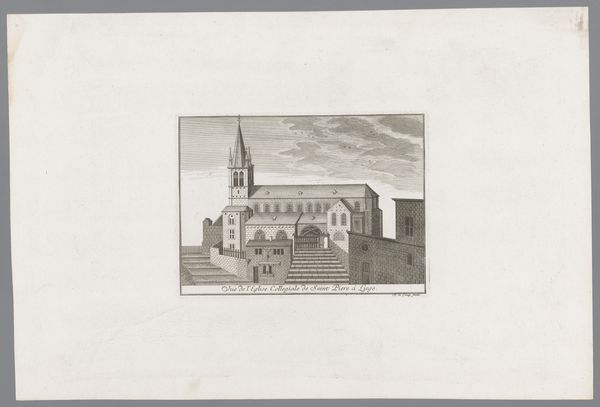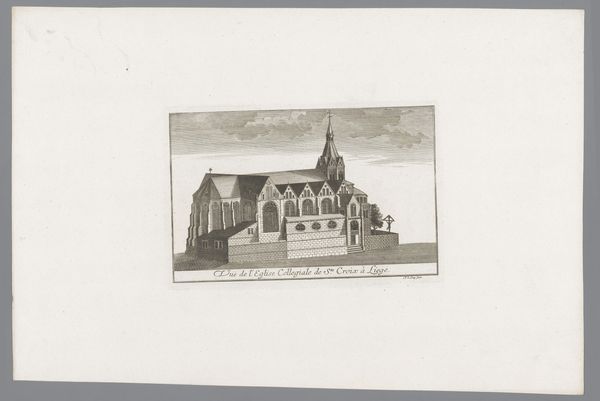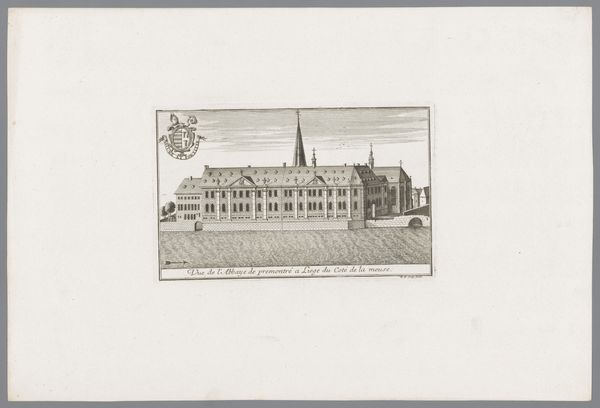
print, engraving
#
baroque
# print
#
line
#
cityscape
#
engraving
Dimensions: height 145 mm, width 219 mm
Copyright: Rijks Museum: Open Domain
Editor: Here we have "View of the Church of Saint Bartholomew in Liège," an engraving from around 1738-1744 by an anonymous artist. I find the stark lines of the architecture quite captivating, especially given the somewhat minimal depiction of the sky. What strikes you most about the composition? Curator: The interplay between line and form dictates the viewer's engagement. Observe how the receding orthogonals of the building and its surrounding wall create depth, a perspectival construction firmly rooted in Baroque aesthetics. It’s interesting to note how the architectural rendering prioritizes the definition of planar surfaces through linear articulation, seemingly eschewing concerns about texture. Editor: So you're focusing on the use of lines to define shapes and create a sense of depth rather than focusing on what it represents? Curator: Precisely. While we could explore the iconographic significance of the church and its architectural style, the formal elements provide a richer vein of inquiry. The artist manipulates line weight and density to create variations in tone, differentiating the building from the sky and the foreground. Does the repetition of vertical lines in the towers, for example, suggest anything to you? Editor: It feels very rigid, almost militaristic for a religious building, a bit overwhelming even. I hadn’t thought about it that way before. Curator: Exactly! And that rigidity, achieved purely through compositional choices, contributes to the overall affect. The line work suppresses texture. Even the clouds lack depth as they parallel the church. The engraving achieves tension using lines that do not meet, or suggest further dimensionality. Editor: That makes me see how much is conveyed through what the artist chooses to emphasize or omit. Thanks for showing me how much a formal analysis reveals! Curator: Indeed, understanding the formal structure opens doors to further layers of interpretation. Every line contributes meaning to the composition.
Comments
No comments
Be the first to comment and join the conversation on the ultimate creative platform.
